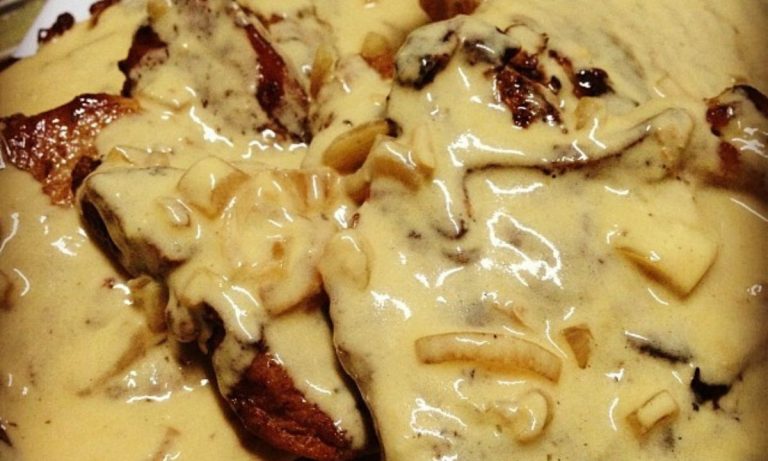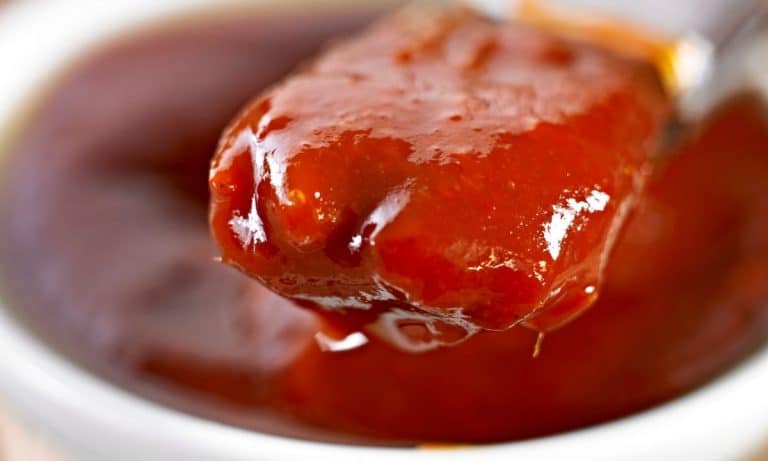Doubanjiang Recipe (Spicy Bean Sauce)
The doubanjiang recipe is a spicy fermented bean paste used in Sichuan cuisine, a famous Chinese cuisine. The paste is fermented with broad beans, soybeans, and chili chilies.
Doubanjiang’s spicy, salty, and faintly sweet taste is complex and savory. It’s in Sichuan hot pot, mapo tofu, and kung pao chicken.
Doubanjiang is used in other Chinese regional cuisines and is becoming more popular globally as a flavorful condiment and ingredient.
How to Make Doubanjiang Paste
Doubanjiang’s rich flavors and spice have always intrigued me. My favorite meals, like mapo tofu and kung pao chicken, use fermented bean paste. But I made Doubanjiang at home for years.
And, I recently attempted handmade Doubanjiang. The rewards were worth it! I felt proud of making this tasty condiment, and it tasted better than any store-bought variety.
Make Doubanjiang at home with my step-by-step directions. I’ll cover ingredients, tools, fermentation, and storage and use of homemade Doubanjiang.
Doubanjiang Ingredients
To make Doubanjiang at home, you’ll need a few key ingredients and pieces of equipment:
- 2 cups of dried broad beans
- 1 cup of dried soybeans
- 1 cup of chili flakes (preferably Sichuan pepper flakes)
- 1/2 cup of salt
- 1/4 cup of sugar
- 1/4 cup of rice vinegar
- 1/4 cup of water
Equipment
- Cheesecloth or a clean kitchen towel
- Food processor or blender
- Large mixing bowl
- Large glass jar or crock for fermenting
Step by Step Instructions to Make Doubanjiang
Step 1: Soak and Cook the Beans
The first step in making Doubanjiang is to soak the beans. Rinse the dried broad beans and soybeans in cold water, then place them in a large bowl and cover them with water. Let the beans soak for at least 12 hours, or overnight.
After soaking, drain the beans and transfer them to a large pot. Cover the beans with water and bring the pot to a boil. Reduce the heat to low and let the beans simmer for 2-3 hours, or until they are tender and easily mashed with a fork.
Step 2: Make the Chili Paste
While the beans are cooking, you can prepare the chili paste. Combine the chili flakes, salt, sugar, rice vinegar, and water in a bowl and stir until well combined.
Step 3: Blend the Beans and Chili Paste
Once the beans are cooked, drain them and let them cool for a few minutes. Then transfer the beans to a food processor or blender and pulse until they are coarsely mashed.
Add the chili paste to the mashed beans and continue to blend until the mixture is smooth and well combined.
Step 4: Ferment the Doubanjiang
Transfer the blended mixture to a large glass jar or crock. Cover the jar with cheesecloth or a clean kitchen towel and let it sit at room temperature for 2-3 days.
During this time, the mixture will ferment and develop its complex flavors. You may notice some bubbling or a slightly sour smell, which is normal.
After 2-3 days, stir the mixture and taste it. If it’s not spicy enough, you can add more chili flakes. If it’s too salty, you can add a bit of water. Adjust the seasoning to your liking.
Cover the jar with a lid and let the Doubanjiang continue to ferment for 1-2 weeks. The longer you ferment it, the stronger the flavor will be.
How spicy is Doubanjiang?
The spiciness of Doubanjiang can vary depending on the number of chili flakes used. Sichuan pepper flakes are typically used for an authentic flavor and a numbing sensation on the tongue.
Can I skip the fermentation process?
The fermentation process is what gives Doubanjiang its unique flavor and complexity. Skipping this step will result in a different, less flavorful condiment.
How to Doubanjiang Use in Cooking
Stir-fries: Add a spoonful or two of Doubanjiang to your stir-fry sauce for a spicy and savory flavor. It pairs particularly well with pork, chicken, and tofu.
Marinades: Mix Doubanjiang with soy sauce, garlic, and ginger to create a flavorful marinade for meat or tofu.
Sauces: Use Doubanjiang to add heat and depth of flavor to sauces. It works particularly well in noodle dishes, dipping sauces, and marinara sauce.
Mapo Tofu: This classic Sichuan dish features tofu in a spicy, flavorful sauce made with Doubanjiang. Try making it at home with your homemade Doubanjiang!
Condiment: Use Doubanjiang as a condiment for dipping or spreading on sandwiches. It pairs particularly well with steamed vegetables, dumplings, and rice.
When using Doubanjiang in cooking, start with a small amount and adjust to taste. It can be quite spicy, so be sure to add gradually if you’re sensitive to heat.
Doubanjiang Variations
Pixian Doubanjiang: This type of Doubanjiang is made with broad beans and comes from the Pixian region of Sichuan. It has a rich umami flavor and is the most commonly used type of Doubanjiang in Sichuan cuisine.
Jiangxi Doubanjiang: This version is made with red peppers and is popular in Jiangxi province. It has a sweet and spicy flavor and is often used in stir-fried dishes.
Hunan Doubanjiang: This variation is made with fermented soybeans and is popular in Hunan province. It has a salty and slightly sweet flavor and is often used in marinades and stir-fry dishes.
How to Store Doubanjiang
Refrigeration: Refrigerate doubanjiang in a sealed container. This preserves sauce flavor and texture.
Avoid air exposure: After opening the Doubanjiang jar, press a piece of plastic wrap firmly onto the condiment before sealing it. This will keep air from drying and hardening the surface.
Shelf life: Refrigerated homemade Doubanjiang lasts months. The expiry date on store-bought Doubanjiang should be followed.
Long-term storage: Doubanjiang can be frozen. Label and portion Doubanjiang. Freeze it for 6 months.
Is Doubanjiang the same as Gochujang?
No, Doubanjiang and Gochujang are not the same. Doubanjiang is a Chinese fermented bean paste made from broad beans and soybeans, while Gochujang is a Korean fermented chili paste made from chili powder, rice, and soybeans.
While they both have a similar texture and are used as a condiment, they have different flavors and are used in different cuisines.
What is a substitute for Doubanjiang?
Some substitutes for Doubanjiang include miso paste, chili bean sauce, and Sriracha. However, it’s important to note that these substitutes may not have the same flavor profile as Doubanjiang, and the result may be slightly different.
If possible, it’s always best to use Doubanjiang for an authentic and delicious flavor. If Doubanjiang is not available, experimenting with the substitutes can still add a similar level of heat and complexity to your dishes.

Doubanjiang Recipe
Equipment
- Cheesecloth or a clean kitchen towel
- Food processor or blender
- Large mixing bowl
- Large glass jar or crock for fermenting
Ingredients
- 2 cups of dried broad beans
- 1 cup of dried soybeans
- 1 cup of chili flakes preferably Sichuan pepper flakes
- 1/2 cup of salt
- 1/4 cup of sugar
- 1/4 cup of rice wine
- 1/4 cup of water
Instructions
- The first step in making Doubanjiang is to soak the beans. Rinse the dried broad beans and soybeans in cold water, then place them in a large bowl and cover them with water. Let the beans soak for at least 12 hours, or overnight.
- After soaking, drain the beans and transfer them to a large pot. Cover the beans with water and bring the pot to a boil. Reduce the heat to low and let the beans simmer for 2-3 hours, or until they are tender and easily mashed with a fork.
- While the beans are cooking, you can prepare the chili paste. Combine the chili flakes, salt, sugar, rice wine, and water in a bowl and stir until well combined.
- Once the beans are cooked, drain them and let them cool for a few minutes. Then transfer the beans to a food processor or blender and pulse until they are coarsely mashed.
- Add the chili paste to the mashed beans and continue to blend until the mixture is smooth and well combined.
- Transfer the blended mixture to a large glass jar or crock. Cover the jar with cheesecloth or a clean kitchen towel and let it sit at room temperature for 2-3 days.
- During this time, the mixture will ferment and develop its complex flavors. You may notice some bubbling or a slight sour smell, which is normal.
- After 2-3 days, stir the mixture and taste it. If it’s not spicy enough, you can add more chili flakes. If it’s too salty, you can add a bit of water. Adjust the seasoning to your liking.
- Cover the jar with a lid and let the Doubanjiang continue to ferment for 1-2 weeks. The longer you ferment it, the stronger the flavor will be.







